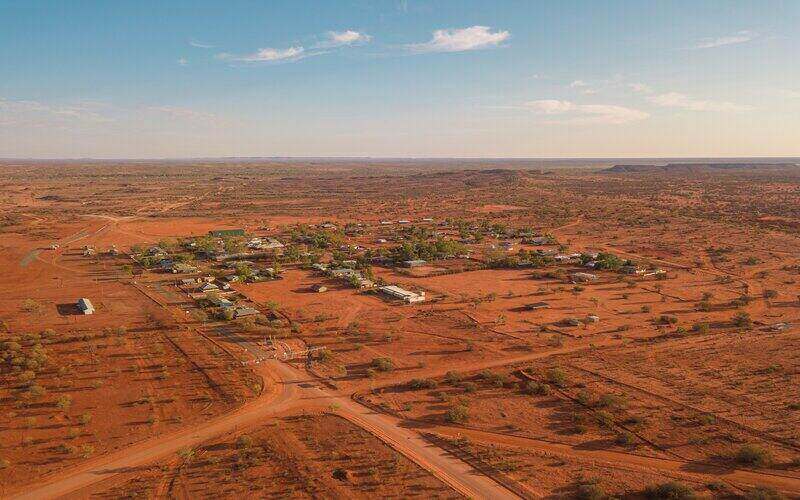Land tax is an annual tax levied by state and territory governments. It is calculated on the cumulative value of all the land a landholder owns in the state or territory but does not include their home. As such, it is a tax more likely to affect investors than owner-occupiers. Land tax is charged on all landholdings a person owns whether they are vacant or built on.
In all jurisdictions, land tax only kicks in when the total value of the land holdings exceeds a certain threshold. This differs considerably between the states and the ACT. (The Northern Territory does not charge land tax as at May 2024.)
What do you pay land tax on?
The rules differ between the states but generally, land tax is levied on:
-
investment properties
-
commercial sites
-
holiday homes
-
vacant land
-
unused rural land
What is exempt from land tax?
-
your home (or principal place of residence)
-
your farm or primary production land
-
low-cost accommodation or rooming houses (in some states)
-
land used and occupied by charities (in most states)
How are land values determined?
Land tax is based on unimproved land value which is what a block of land is deemed to be worth, disregarding any buildings or structures on it. Land values are determined by each state and territory’s valuer general who, in turn, have their own methods of arriving at unimproved land value. Generally, these take into account:
-
the land’s highest and most valuable use (even if it is not presently being used in that way)
-
recent property sales, including vacant and improved properties where the price of the improvements is removed
-
zoning, heritage restrictions, or other constraints to use
-
location and views
-
size, shape, and features
-
nearby development and infrastructure
Land valuations of residential blocks with homes on them rarely equate with market values because they do not take into account what’s on the land. As such, property valuations, as typically conducted by lenders during a home loan application process, will arrive at different values, usually significantly higher. This is because the property valuer has been far more specific in valuing the individual block and the home built on it.
How is land tax calculated?
Tax rates vary according to each jurisdiction but similar to stamp duty, the states and the ACT typically charge land tax on a sliding scale. Basically, once the total value of the property you own passes an exemption threshold, you will be charged a base sum plus a percentage amount for every dollar above the threshold.
For example, the land tax exemption threshold in Queensland, as at May 2024, is $599,999 for individuals. If an investor has an investment property with an unimproved land value of $400,000, they are not liable for land tax. However, another investor with an investment property land value of $700,000 would pay a flat fee of $500 on the first $600,000 plus one cent for each dollar over $600,000, so another $1,000 on top.
The typical ‘mum and dad investor’ with one median-value residential investment property would usually fall below the land tax threshold. It is more likely to be levied on investors holding premium or multiple properties (although this is not currently the case in Victoria - see below).
As such, you can likely see why investors are, well, invested in valuer general land valuations. Large jumps in official valuations (which are generally conducted every three years in most jurisdictions) can result in significant increases in land tax.
What are land tax rates for each state?
It should be noted some jurisdictions levy different rates of land tax on individuals, companies and trusts, and non-resident or foreign landholders. Others apply additional surcharges on absentee or foreign owners. Land tax calculations are applied to land holdings at set date each year, 31 December in some states and 30 June or 1 July in others. Some states apply the tax for the whole year regardless of whether the property was owned for only part of the year. Land tax is applied quarterly in the ACT.
Here are some links to detailed land tax rates and regulations in each state and the ACT.
|
State |
Link |
|---|---|
|
New South Wales |
https://www.revenue.nsw.gov.au/taxes-duties-levies-royalties/land-tax |
|
Victoria |
|
|
Queensland |
|
|
Western Australia |
https://www.wa.gov.au/organisation/department-of-finance/land-tax |
|
South Australia |
|
|
Tasmania |
|
|
Australian Capital Territory |
|
|
Northern Territory |
No land tax applies |
The Victorian case study
From 1 January 2024, the Victorian land tax-free threshold for individuals and companies was dropped from a value of $300,000 to $50,000. The Victorian government announced the move as part of a “temporary” response to help pay the state’s COVID debt. The change aims to collect $4.7 billion from property investors over the next four years. It will also see around 380,000 mum and dad investors having to pay land tax in the state for the first time.
Some property industry figures say the move is stifling investment in the Victoria market and is likely another factor contributing to record rents in the state. ABS lending data for February 2024 shows a marked decline in both the number and value of investor loans written in Victoria since October 2023. This contrasts with every other state and territory where lending has increased or remained roughly the same over the same period, as illustrated below:
New Loan commitments for investor housing (seasonally adjusted), values, by state
, values, by state (1).jpeg?language_id=1)
Problems with land tax?
No tax is exactly popular, but critics of land tax point out its inequities. Many high-wealth investors can minimise the land tax they pay by diversifying their property holdings across different states and territories. Total land holdings for land tax calculation purposes do not take into account other properties owned outside state or territory borders. Critics also point out land tax is not based on the rental income an investor receives, rather an unimproved land value. This can mean a landholder with a vacant block can be paying the same land tax as an investor reaping substantial rental income from the site (which, of course, is subject to federal income tax).
Savings.com.au’s two cents
Many mum and dad, or smaller investors, are not affected by land tax (except in Victoria) although it pays to keep an eye on official land valuations and thresholds in your state or territory. You may also be liable to pay land tax on any property you inherit. Larger-scale property investors need to factor land tax into their investment strategies to determine whether the amount being paid in annual land tax can eventually be recouped in capital gains when the property is eventually sold (less capital gains tax of course).
Image by Jon Tyson on Unsplash

Ready, Set, Buy!
Learn everything you need to know about buying property – from choosing the right property and home loan, to the purchasing process, tips to save money and more!
With bonus Q&A sheet and Crossword!



 Harry O'Sullivan
Harry O'Sullivan
 Bea Garcia
Bea Garcia
 Denise Raward
Denise Raward
 Jacob Cocciolone
Jacob Cocciolone


